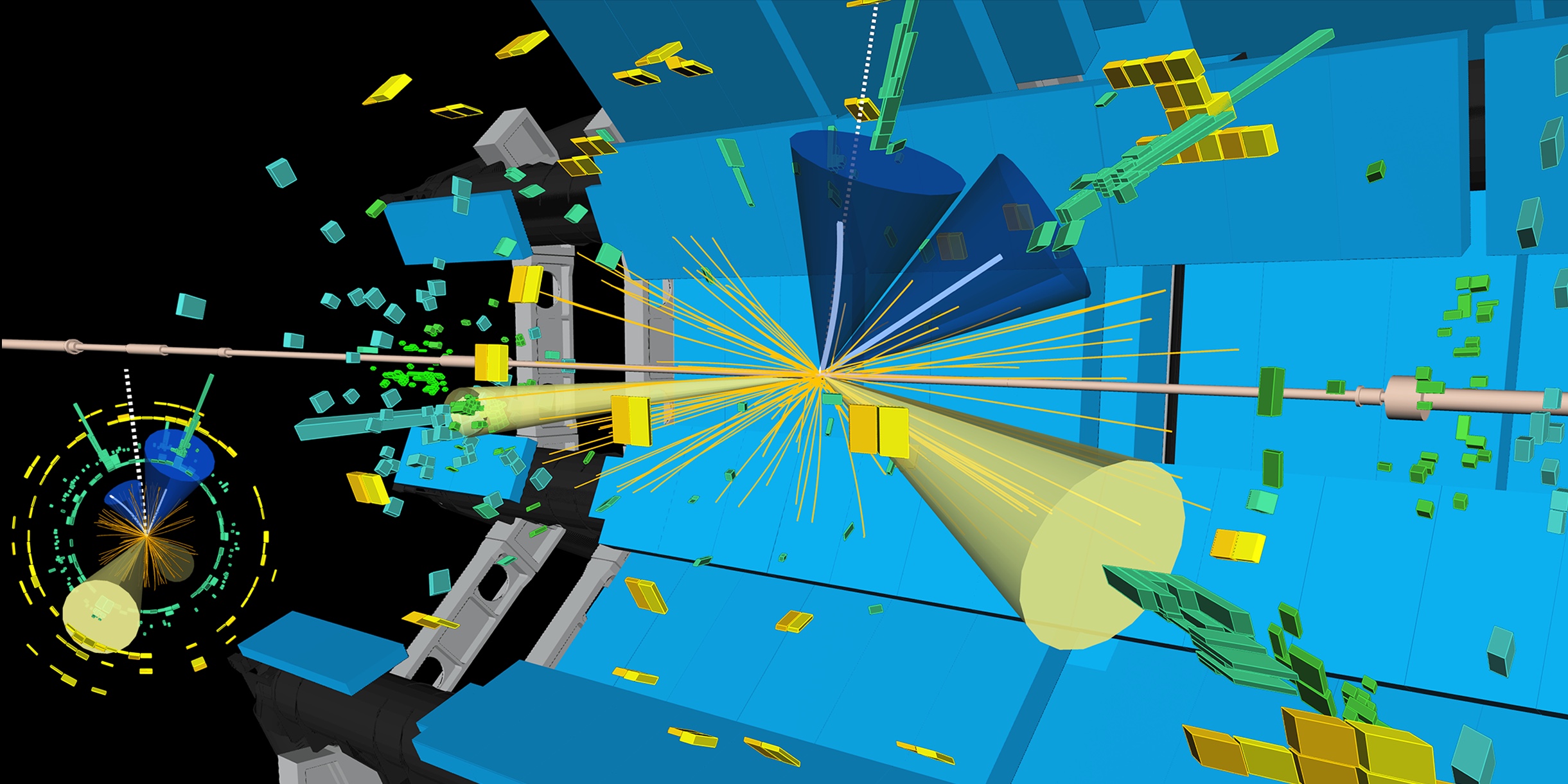Unveiling Higgs-boson production properties using tau-lepton pairs
21 August 2024 | By
The discovery of the Higgs boson in 2012 marked a major milestone in particle physics, but that was far from the end of the story. Over the past twelve years, researchers from the ATLAS experiment have been measuring Higgs boson properties to see if they agree with Standard-Model predictions. Despite significant discoveries, many aspects of the Higgs boson remain unexplored.

The Higgs boson's interaction with other particles varies depending on whether they are bosons (force carriers like the W or Z bosons) or fermions (matter particles like leptons), where in both cases heavier particles are interacting more strongly. New measurements by the ATLAS Collaboration show that studying Higgs-boson decays into tau-lepton pairs can reveal not only its interactions with fermions, but also give insights into Higgs-boson production at the LHC. This includes the vector-boson-fusion (VBF) mechanism, where two quarks radiate a Z or W boson that fuses to produce a Higgs boson. The quarks are then detected in the ATLAS experiment as cones of hadrons called “jets”.
ATLAS researchers performed two kinds of cross-section measurements in their new analysis of Higgs-boson decays to tau leptons. First, physicists sorted the Higgs boson candidates into different categories based on their properties or the objects produced in association with them. Figure 1 provides an example of the mass distribution of the candidate events in one of these categories. Researchers then used these categories to measure “simplified template cross sections” (STXS), which characterise the production properties of the Higgs boson independently of its decay channel. Their results offer unprecedented precision in characterising the VBF production in events where the two VBF jets in the final state are highly energetic.
ATLAS researchers have conducted a new study of the Higgs-boson decay to tau leptons, achieving a greater understanding of Higgs production mechanisms at the LHC.

However, these measurements do not come without complications. The tau lepton is unstable and can decay into a lighter lepton and a neutrino. Neutrinos are elusive particles that escape the ATLAS experiment undetected, complicating the work of physicists. Additionally, the Z boson, which more commonly decays into tau leptons at the LHC, can easily mimic the rarer Higgs-boson decay into tau leptons. To distinguish the Higgs bosons from the large background from Z bosons, researchers used both machine-learning and data-driven techniques.
ATLAS physicists also performed “fiducial differential” cross-section measurements, in which they considered the Higgs boson cross section as a function of different kinematic variables. These measurements depend minimally on theoretical predictions, making them a valuable point of comparison between experimental results looking at different theoretical approaches to the Standard Model.
One variable studied was the difference in the angular distribution of the two jets produced alongside the Higgs boson. This variable is especially sensitive to the nature of the Higgs-boson production vertex and can be used to constrain potential effects from new physics phenomena. Specifically, certain constrained effects involve “charge-parity violation”, which may be connected to the mystery of the universe’s greater-than-expected matter-antimatter imbalance. This distribution in data, alongside select beyond-the-Standard-Model physics models, is shown in Figure 2.
The developments presented in this new ATLAS analysis have led to a greater understanding of Higgs-boson production. Researchers have achieved measurements of unprecedented precision, helping to validate different theoretical approaches to the Standard Model and setting limits on where new physics may lurk.
Learn more
- Differential cross-section measurements of Higgs boson production in the H→τ+τ− decay channel in proton–proton collisions at 13 TeV with the ATLAS detector (arXiv:2407.16320, see figures)
- LHCP 2024 presentation by Antonio Jesús Gómez Delegido: Higgs boson coupling measurements in ATLAS
- ICHEP 2024 presentation by Christopher Young: Measurements of Higgs boson coupling properties to tau leptons with the ATLAS detector
- ICHEP 2024 presentation by Nicolas Berger: Higgs experimental overview
- ATLAS measures key Higgs boson interaction with high precision, ATLAS Physics Briefing, 2 August 2021




